The history of Windsor Castle: we explore the famous royal residence
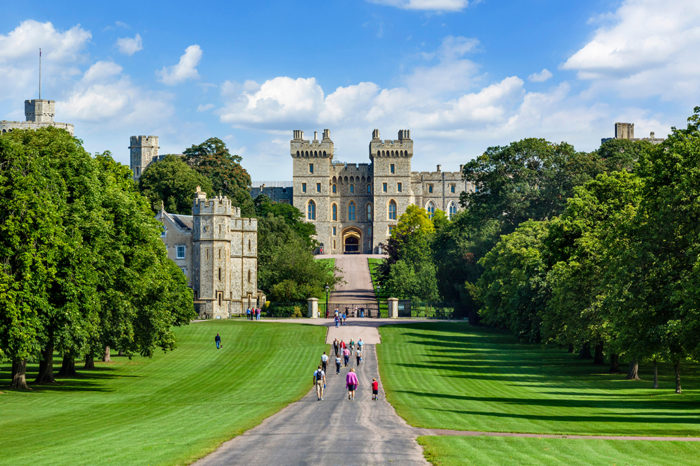
As the new Prince and Princess of Wales move their family to Windsor, we take a closer look at the history of Windsor castle, which has been a royal home for almost 1,000 years…
The history of Windsor Castle: A royal residence since William the Conqueror, and The Queen’s favourite
Our late Queen Elizabeth II loved Windsor – the grand, crenellated castle with distinct round tower, perched high above the River Thames in Berkshire, which has been an official residence of kings and queens since William the Conqueror had it built as a fortress to protect London from attack from western approaches around 1070.
It was here, on the edge of the leafy town of Windsor, that Her Majesty chose to spend lockdown during the Covid-19 pandemic, creating a ‘HMS bubble’ with 22 members of her household.
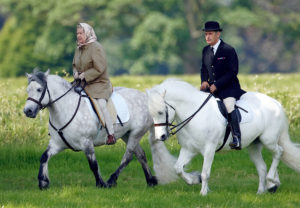
In an update to her book The Other Side of the Coin: The Queen, the Dresser, and the Wardrobe, the Queen’s personal stylist and dresser, Angela Kelly, spilled the beans on some of the antics Her Majesty got up to during lockdown, including hiding behind a tree in Windsor Home Park as members of her staff participated in ‘Bubble Olympics’.
According to excerpts published in Hello! magazine, the Queen arrived by Range Rover to give out prizes. Kelly wrote: “Little did the staff know that The Queen had actually arrived earlier and had been watching, hidden behind the bushes.”
That The Queen felt playful and at ease in Windsor’s parks and gardens is unsurprising. It was here, many years previously, that she had learned to ride horses – the young
Princess Elizabeth and her sister Princess Margaret spent a lot of time at Windsor during the Second World War while their parents, the King and Queen, stayed in the capital to support the war effort.
Over the years, Queen Elizabeth was regularly spotted riding or walking in the park, and she even made her husband ranger of Windsor Great Park upon their marriage. Prince Philip, likewise, enjoyed the royal parkland, and could sometimes be seen training for his carriage driving competitions here.
In 2022, The Queen made Windsor her permanent home, as she began to withdraw from public duties – while Buckingham Palace was essentially her office, Windsor was where she spent most weekends.
The history of Windsor Castle: Official duties
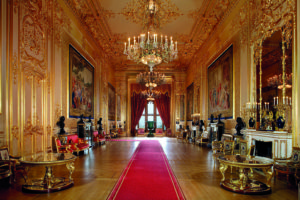
Windsor isn’t just a private home, however, but an official royal residence. It is now an official residence of King Charles, who will no doubt be well versed in the duties carried out by his mother here, which will now fall to him.
Each year in spring, for instance, Her Majesty hosted the Easter Court here for a month between March and April. During this time, she held ‘dine and sleep’ events for prestigious guests, such as dignitaries and politicians, who were invited to grand banquets with the Queen and other members of the Royal Family, before bedding down in one of the castle’s ostentatious rooms.
Another of the Queen’s royal duties at Windsor was the annual Order of the Garter ceremony each June, whereby a special service was held in St George’s Chapel followed by a special lunch in the castle’s Waterloo Chamber.
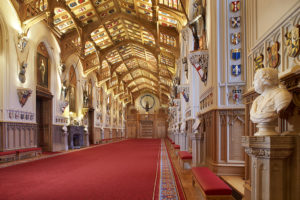
Any new Knights to the Order were then invested by the Queen in the elaborate Garter Throne Room, beneath the eyes of past royals dressed in the blue garter robes, who stared down from the portraits on the wall. For many visitors to Windsor, a trip will now be in part a pilgrimage to pay their respects to Queen Elizabeth II, who was laid to rest in the castle’s St George’s Chapel on 19 September 2022.
Tickets to the castle give access to St George’s Chapel but avoid Sundays when it is only open for those attending a service. Inside, you will be able to see the ledger stone made from hand-carved black marble that marks the burial site of Queen Elizabeth II, Prince Philip, and the late Queen’s parents. Although the ashes of Princess Margaret are believed to be interred in the grave, her name is not on the ledger.
The history of Windsor Castle: Charles II’s remodelling
Away from the memorial, there are many wonderful reasons to visit Windsor Castle. It has been home to a succession of famous royals, from William the Conqueror to Charles II. The latter had the castle elaborately remodelled, presumably to wipe the stain of parliamentarian occupation off it.
One of the additions by Charles II was the 2.64-mile Long Walk, designed to create a “dramatic first impression” according to the Royal Collection, after Charles had re-established Windsor Great Park, which had been sold off by the Parliamentarians. Charles turned the park into a royal hunting ground and the Long Walk was later added to during the reign of King George IV.
Inside the castle, there are numerous luxurious state apartments to view, which are used by the monarch to entertain. In the Grand Reception Room, possibly the most fanciful of all the rooms, huge tapestries hang on the walls, framed by gilt detailing, while gold chandeliers are designed to bedazzle.
Once the main ballroom and today used to host official Heads of State, it’s hard to imagine these gold walls were once blackened by smoke, but during the devastating fire of 1992, it was among nine state rooms and 115 rooms within the castle in total, that were damaged.
The project to restore the rooms damaged by the fire, which began when a spotlight ignited a curtain in Queen Victoria’s Private Chapel, was extensive, and much of it was funded by opening up Buckingham Palace’s state rooms to the public during the summer months. Thankfully, when the castle reopened in 1997, it was as though there had been no fire.
Today, walking its grand state rooms, you’ll be struck by the number of Masters paintings on display. A highlight is the Charles I in Three Positions painting by Van Dyck, described by sculptor Bernini as a “portrait of a doomed man” – his Order of the Garter riband can be seen in all three depictions.
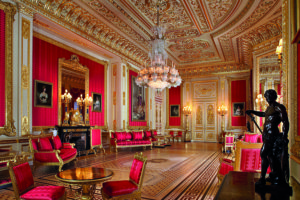
It was Charles I’s son, Charles II, who initially transformed Windsor from a medieval castle to a palace suited to court life, in a magnificent display of royal power, emulating some of the grandeur of his cousin Louis XIV’s Palace of Versailles.
Though subsequent monarchs have expanded on his work, you can still admire the historic rooms built for King Charles II and his Queen, Catherine of Braganza, which get smaller the closer to their private quarters you get.
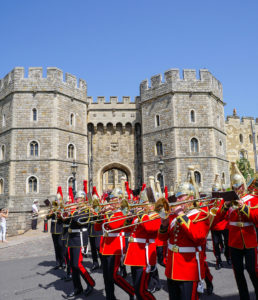
Another much-loved part of a visit to Windsor is the Changing of the Guard, which happens several times a week, but you should check the website for up-to-date times of the ceremony before you book your castle ticket. You can see the red-coated soldiers marching through the streets on the way to the castle, but you can’t beat seeing the full ceremony within the castle walls.
The history of Windsor Castle: A future home for Kate and Will?
Though Windsor is known as the largest and oldest inhabited castle in the world, strictly speaking, following the death of Her Majesty Queen Elizabeth II in September, Windsor Castle is not actually inhabited – at least not by any members of the Royal Family (around 150 staff members are in residence). King Charles has spent little time here so far and though the new Prince and Princess of Wales, William and Kate, moved into Adelaide Cottage on the estate in summer and there have been fevered rumours that they would move into the castle following the Queen’s death, it hasn’t happened yet.
This is an extract, read the full feature in the Dec/Jan 2022 issue of Discover Britain, out on 4 November.
Read more:
King Charles III’s coronation: date announced by Buckingham Palace
Queen Elizabeth II lies in state at Westminster Hall: We joined the queue to see her



